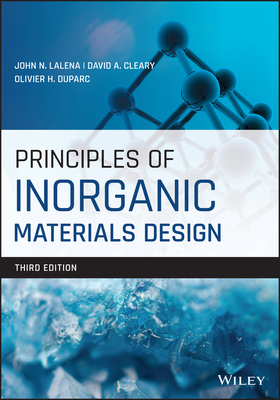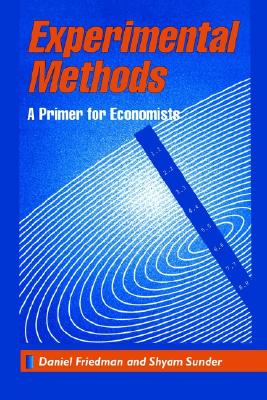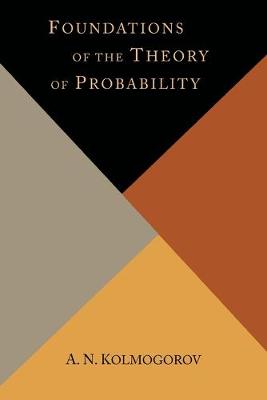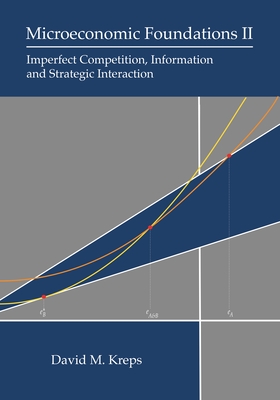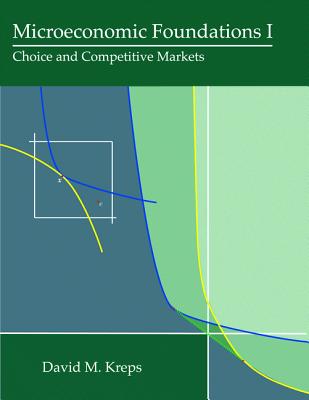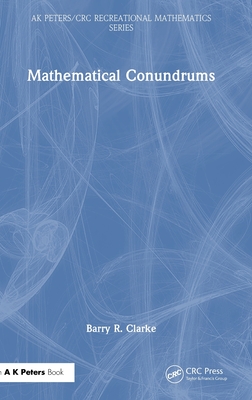图书简介
Learn the fundamentals of materials design with this all-inclusive approach to the basics in the field Study of materials science is an important aspect of curricula at universities worldwide. This text is designed to serve students at a fundamental level, positioning materials design as an essential aspect of the study of electronics, medicine, and energy storage. Now in its 3rd edition, Principles of Inorganic Materials Design is an introduction to relevant topics including inorganic materials structure/property relations and material behaviors. The new edition now includes chapters on computational materials science, intermetallic compounds, and covalent compounds. The text is meant to aid students in their studies by providing additional tools to study the key concepts and understand recent developments in materials research. In addition to the many topics covered, the textbook includes: * Accessible learning tools to help students better understand key concepts * Updated content including case studies and new information on computational materials science * Practical end-of-chapter exercises to assist students with the learning of the material * Short biographies introducing pioneers in the field of inorganic materials science For undergraduates just learning the material or professionals looking to brush up on their knowledge of current materials design information, this text covers a wide range of concepts, research, and topics to help round out their education. The foreword to the first edition was written by the 2019 Chemistry Nobel laureate Prof. John B. Goodenough.
Foreword to Second Edition xiii Foreword to First Edition xv Preface to Third Edition xix Preface to Second Edition xx Preface to First Edition xxi Acronyms xxiii 1 Crystallographic Considerations 1 1.1 Degrees of Crystallinity 1 1.1.1 Monocrystalline Solids 2 1.1.2 Quasicrystalline Solids 3 1.1.3 Polycrystalline Solids 4 1.1.4 Semicrystalline Solids 5 1.1.5 Amorphous Solids 8 1.2 Basic Crystallography 8 1.2.1 Crystal Geometry 8 1.2.1.1 Types of Crystallographic Symmetry 12 1.2.1.2 Space Group Symmetry 17 1.2.1.3 Lattice Planes and Directions 27 1.3 Single-Crystal Morphology and Its Relationship to Lattice Symmetry 32 1.4 Twinned Crystals, Grain Boundaries, and Bicrystallography 37 1.4.1 Twinned Crystals and Twinning 37 1.4.2 Crystallographic Orientation Relationships in Bicrystals 39 1.4.2.1 The Coincidence Site Lattice 39 1.4.2.2 Equivalent Axis-Angle Pairs 44 1.5 Amorphous Solids and Glasses 46 1.5.1 Oxide Glasses 49 1.5.2 Metallic Glasses and Metal-Organic Framework Glasses 51 1.5.3 Aerogels 53 Practice Problems 53 References 55 2 Microstructural Considerations 57 2.1 Materials Length Scales 57 2.1.1 Experimental Resolution of Material Features 61 2.2 Grain Boundaries in Polycrystalline Materials 63 2.2.1 Grain Boundary Orientations 63 2.2.2 Dislocation Model of Low Angle Grain Boundaries 65 2.2.3 Grain Boundary Energy 66 2.2.4 Special Types of "Low-Energy" Boundaries 68 2.2.5 Grain Boundary Dynamics 69 2.2.6 Representing Orientation Distributions in Polycrystalline Aggregates 70 2.3 Materials Processing and Microstructure 72 2.3.1 Conventional Solidification 72 2.3.1.1 Grain Homogeneity 74 2.3.1.2 Grain Morphology 76 2.3.1.3 Zone Melting Techniques 78 2.3.2 Deformation Processing 79 2.3.3 Consolidation Processing 79 2.3.4 Thin-Film Formation 80 2.3.4.1 Epitaxy 81 2.3.4.2 Polycrystalline PVD Thin Films 81 2.3.4.3 Polycrystalline CVD Thin Films 83 2.4 Microstructure and Materials Properties 83 2.4.1 Mechanical Properties 83 2.4.2 Transport Properties 86 2.4.3 Magnetic and Dielectric Properties 90 2.4.4 Chemical Properties 92 2.5 Microstructure Control and Design 93 Practice Problems 96 References 96 3 Crystal Structures and Binding Forces 99 3.1 Structure Description Methods 99 3.1.1 Close Packing 99 3.1.2 Polyhedra 103 3.1.3 The (Primitive) Unit Cell 103 3.1.4 Space Groups and Wyckoff Positions 104 3.1.5 Strukturbericht Symbols 104 3.1.6 Pearson Symbols 105 3.2 Cohesive Forces in Solids 106 3.2.1 Ionic Bonding 106 3.2.2 Covalent Bonding 108 3.2.3 Dative Bonds 110 3.2.4 Metallic Bonding 111 3.2.5 Atoms and Bonds as Electron Charge Density 112 3.3 Chemical Potential Energy 113 3.3.1 Lattice Energy for Ionic Crystals 114 3.3.2 The Born-Haber Cycle 119 3.3.3 Goldschmidt’s Rules and Pauling’s Rules 120 3.3.4 Total Energy 122 3.3.5 Electronic Origin of Coordination Polyhedra in Covalent Crystals 124 3.4 Common Structure Types 127 3.4.1 Iono-covalent Solids 128 3.4.1.1 AX Compounds 128 3.4.1.2 AX2 Compounds 130 3.4.1.3 AX6 Compounds 132 3.4.1.4 ABX2 Compounds 132 3.4.1.5 AB2X4 Compounds (Spinel and Olivine Structures) 134 3.4.1.6 ABX3 Compounds (Perovskite and Related Phases) 135 3.4.1.7 A2B2O5(ABO2.5) Compounds (Oxygen-Deficient Perovskites) 137 3.4.1.8 AxByOz Compounds (Bronzes) 139 3.4.1.9 A2B2X7 Compounds (Pyrochlores) 139 3.4.1.10 Silicate Compounds 140 3.4.1.11 Porous Structures 141 3.4.2 Metal Carbides, Silicides, Borides, Hydrides, and Nitrides 144 3.4.3 Metallic Alloys and Intermetallic Compounds 144 3.4.3.1 Zintl Phases 147 3.4.3.2 Nonpolar Binary Intermetallic Phases 149 3.4.3.3 Ternary Intermetallic Phases 151 3.5 Structural Disturbances 153 3.5.1 Intrinsic Point Defects 154 3.5.2 Extrinsic Point Defects 155 3.5.3 Structural Distortions 156 3.5.4 Bond Valence Sum Calculations 158 3.6 Structure Control and Synthetic Strategies 162 Practice Problems 165 References 167 4 The Electronic Level I: An Overview of Band Theory 171 4.1 The Many-Body Schroedinger Equation and Hartree-Fock 171 4.2 Choice of Boundary Conditions: Born’s Conditions 177 4.3 Free-Electron Model for Metals: From Drude (Classical) to Sommerfeld (Fermi-Dirac) 179 4.4 Bloch’s Theorem, Bloch Waves, Energy Bands, and Fermi Energy 180 4.5 Reciprocal Space and Brillouin Zones 182 4.6 Choices of Basis Sets and Band Structure with Applicative Examples 188 4.6.1 From the Free-Electron Model to the Plane Wave Expansion 189 4.6.2 Fermi Surface, Brillouin Zone Boundaries, and Alkali Metals versus Copper 191 4.6.3 Understanding Metallic Phase Stability in Alloys 193 4.6.4 The Localized Orbital Basis Set Method 195 4.6.5 Understanding Band Structure Diagram with Rhenium Trioxide 196 4.6.6 Probing DOS Band Structure in Metallic Alloys 199 4.7 Breakdown of the Independent-Electron Approximation 200 4.8 Density Functional Theory: The Successor to the Hartree-Fock Approach in Materials Science 202 4.9 The Continuous Quest for Better DFT XC Functionals 205 4.10 Van der Waals Forces and DFT 208 Practice Problems 210 References 210 5 The Electronic Level II: The Tight-Binding Electronic Structure Approximation 213 5.1 The General LCAO Method 214 5.2 Extension of the LCAO Treatment to Crystalline Solids 219 5.3 Orbital Interactions in Monatomic Solids 221 5.3.1 -Bonding Interactions 221 5.3.2 -Bonding Interactions 225 5.4 Tight-Binding Assumptions 229 5.5 Qualitative LCAO Band Structures 232 5.5.1 Illustration 1: Transition Metal Oxides with Vertex-Sharing Octahedra 236 5.5.2 Illustration 2: Reduced Dimensional Systems 238 5.5.3 Illustration 3: Transition Metal Monoxides with Edge-Sharing Octahedra 240 5.5.4 Corollary 243 5.6 Total Energy Tight-Binding Calculations 244 Practice Problems 246 References 246 6 Transport Properties 249 6.1 An Introduction to Tensors 249 6.2 Microscopic Theory of Electrical Transport in Ceramics: The Role of Point Defects 254 6.2.1 Oxygen-Deficient/Metal Excess and Metal-Deficient/Oxygen Excess Oxides 256 6.2.2 Substitutions by Aliovalent Cations with Valence Isoelectronicity 261 6.2.3 Substitutions by Isovalent Cations That are Not Valence Isoelectronic 263 6.2.4 Nitrogen Vacancies in Nitrides 266 6.3 Thermal Conductivity 268 6.3.1 The Free Electron Contribution 269 6.3.2 The Phonon Contribution 271 6.4 Electrical Conductivity 274 6.4.1 Band Structure Considerations 278 6.4.1.1 Conductors 278 6.4.1.2 Insulators 279 6.4.1.3 Semiconductors 281 6.4.1.4 Semimetals 290 6.4.2 Thermoelectric, Photovoltaic, and Magnetotransport Properties 292 6.4.2.1 Thermoelectrics 292 6.4.2.2 Photovoltaics 298 6.4.2.3 Galvanomagnetic Effects and Magnetotransport Properties 301 6.4.3 Superconductors 303 6.4.4 Improving Bulk Electrical Conduction in Polycrystalline, Multiphasic, and Composite Materials 307 6.5 Mass Transport 308 6.5.1 Atomic Diffusion 309 6.5.2 Ionic Conduction 316 Practice Problems 321 References 322 7 Hopping Conduction and Metal-Insulator Transitions 325 7.1 Correlated Systems 327 7.1.1 The Mott-Hubbard Insulating State 329 7.1.2 Charge-Transfer Insulators 334 7.1.3 Marginal Metals 334 7.2 Anderson Localization 336 7.3 Experimentally Distinguishing Disorder from Electron Correlation 340 7.4 Tuning the M-I Transition 343 7.5 Other Types of Electronic Transitions 345 Practice Problems 347 References 347 8 Magnetic and Dielectric Properties 349 8.1 Phenomenological Description of Magnetic Behavior 351 8.1.1 Magnetization Curves 354 8.1.2 Susceptibility Curves 355 8.2 Atomic States and Term Symbols of Free Ions 359 8.3 Atomic Origin of Paramagnetism 365 8.3.1 Orbital Angular Momentum Contribution: The Free Ion Case 366 8.3.2 Spin Angular Momentum Contribution: The Free Ion Case 367 8.3.3 Total Magnetic Moment: The Free Ion Case 368 8.3.4 Spin-Orbit Coupling: The Free Ion Case 368 8.3.5 Single Ions in Crystals 371 8.3.5.1 Orbital Momentum Quenching 371 8.3.5.2 Spin Momentum Quenching 373 8.3.5.3 The Effect of JT Distortions 373 8.3.6 Solids 374 8.4 Diamagnetism 376 8.5 Spontaneous Magnetic Ordering 377 8.5.1 Exchange Interactions 379 8.5.1.1 Direct Exchange and Superexchange Interactions in Magnetic Insulators 382 8.5.1.2 Indirect Exchange Interactions 387 8.5.2 Itinerant Ferromagnetism 390 8.5.3 Noncollinear Spin Configurations and Magnetocrystalline Anisotropy 394 8.5.3.1 Geometric Frustration 394 8.5.3.2 Magnetic Anisotropy 397 8.5.3.3 Magnetic Domains 398 8.5.4 Ferromagnetic Properties of Amorphous Metals 401 8.6 Magnetotransport Properties 401 8.6.1 The Double Exchange Mechanism 402 8.6.2 The Half-Metallic Ferromagnet Model 403 8.7 Magnetostriction 404 8.8 Dielectric Properties 405 8.8.1 The Microscopic Equations 407 8.8.2 Piezoelectricity 408 8.8.3 Pyroelectricity 414 8.8.4 Ferroelectricity 416 Practice Problems 421 References 422 9 Optical Properties of Materials 425 9.1 Maxwell’s Equations 425 9.2 Refractive Index 428 9.3 Absorption 436 9.4 Nonlinear Effects 441 9.5 Summary 446 Practice Problems 446 References 447 10 Mechanical Properties 449 10.1 Stress and Strain 449 10.2 Elasticity 452 10.2.1 The Elasticity Tensors 455 10.2.2 Elastically Isotropic and Anisotropic Solids 459 10.2.3 The Relation Between Elasticity and the Cohesive Forces in a Solid 465 10.2.3.1 Bulk Modulus 466 10.2.3.2 Rigidity (Shear) Modulus 467 10.2.3.3 Young’s Modulus 470 10.2.4 Superelasticity, Pseudoelasticity, and the Shape Memory Effect 473 10.3 Plasticity 475 10.3.1 The Dislocation-Based Mechanism to Plastic Deformation 481 10.3.2 Polycrystalline Metals 487 10.3.3 Brittle and Semi-brittle Solids 489 10.3.4 The Correlation Between the Electronic Structure and the Plasticity of Materials 490 10.4 Fracture 491 Practice Problems 494 References 495 11 Phase Equilibria, Phase Diagrams, and Phase Modeling 499 11.1 Thermodynamic Systems and Equilibrium 500 11.1.1 Equilibrium Thermodynamics 504 11.2 Thermodynamic Potentials and the Laws 507 11.3 Understanding Phase Diagrams 510 11.3.1 Unary Systems 510 11.3.2 Binary Systems 511 11.3.3 Ternary Systems 518 11.3.4 Metastable Equilibria 522 11.4 Experimental Phase Diagram Determinations 522 11.5 Phase Diagram Modeling 523 11.5.1 Gibbs Energy Expressions for Mixtures and Solid Solutions 524 11.5.2 Gibbs Energy Expressions for Phases with Long-Range Order 527 11.5.3 Other Contributions to the Gibbs Energy 530 11.5.4 Phase Diagram Extrapolations: The CALPHAD Method 531 Practice Problems 534 References 535 12 Synthetic Strategies 537 12.1 Synthetic Strategies 538 12.1.1 Direct Combination 538 12.1.2 Low Temperature 540 12.1.2.1 Sol-Gel 540 12.1.2.2 Solvothermal 543 12.1.2.3 Intercalation 544 12.1.3 Defects 546 12.1.4 Combinatorial Synthesis 548 12.1.5 Spinodal Decomposition 548 12.1.6 Thin Films 550 12.1.7 Photonic Materials 552 12.1.8 Nanosynthesis 553 12.1.8.1 Liquid Phase Techniques 554 12.1.8.2 Vapor/Aerosol Methods 556 12.1.8.3 Combined Strategies 556 12.2 Summary 558 Practice Problems 559 References 559 13 An Introduction to Nanomaterials 563 13.1 History of Nanotechnology 564 13.2 Nanomaterials Properties 565 13.2.1 Electrical Properties 566 13.2.2 Magnetic Properties 567 13.2.3 Optical Properties 567 13.2.4 Thermal Properties 568 13.2.5 Mechanical Properties 569 13.2.6 Chemical Reactivity 570 13.3 More on Nanomaterials Preparative Techniques 572 13.3.1 Top-Down Methods for the Fabrication of Nanocrystalline Materials 572 13.3.1.1 Nanostructured Thin Films 572 13.3.1.2 Nanocrystalline Bulk Phases 573 13.3.2 Bottom-Up Methods for the Synthesis of Nanostructured Solids 574 13.3.2.1 Precipitation 575 13.3.2.2 Hydrothermal Techniques 576 13.3.2.3 Micelle-Assisted Routes 577 13.3.2.4 Thermolysis, Photolysis, and Sonolysis 580 13.3.2.5 Sol-Gel Methods 581 13.3.2.6 Polyol Method 582 13.3.2.7 High-Temperature Organic Polyol Reactions (IBM Nanoparticle Synthesis) 584 13.3.2.8 Additive Manufacturing (3D Printing) 584 References 586 14 Introduction to Computational Materials Science 589 14.1 A Short History of Computational Materials Science 590 14.1.1 1945-1965: The Dawn of Computational Materials Science 591 14.1.2 1965-2000: Steady Progress Through Continued Advances in Hardware and Software 595 14.1.3 2000-Present: High-Performance and Cloud Computing 598 14.2 Spatial and Temporal Scales, Computational Expense, and Reliability of Solid-State Calculations 600 14.3 Illustrative Examples 604 14.3.1 Exploration of the Local Atomic Structure in Multi-principal Element Alloys by Quantum Molecular Dynamics 604 14.3.2 Magnetic Properties of a Series of Double Perovskite Oxides A2BCO6 (A = Sr, Ca; B = Cr; C = Mo, Re, W) by Monte Carlo Simulations in the Framework of the Ising Model 606 14.3.3 Crystal Plasticity Finite Element Method (CPFEM) Analysis for Modeling Plasticity in Polycrystalline Alloys 613 References 617 15 Case Study I: TiO2 619 15.1 Crystallography 619 15.2 Microstructure 623 15.3 Bonding 626 15.4 Electronic Structure 627 15.5 Transport 628 15.6 Metal-Insulator Transitions 632 15.7 Magnetic and Dielectric Properties 632 15.8 Optical Properties 634 15.9 Mechanical Properties 635 15.10 Phase Equilibria 636 15.11 Synthesis 638 15.12 Nanomaterial 639 Practice Questions 639 References 640 16 Case Study II: GaN 643 16.1 Crystallography 643 16.2 Microstructure 646 16.3 Bonding 647 16.4 Electronic Structure 647 16.5 Transport 648 16.6 Metal-Insulator Transitions 650 16.7 Magnetic and Dielectric Properties 652 16.8 Optical Properties 652 16.9 Mechanical Properties 653 16.10 Phase Equilibria 654 16.11 Synthesis 654 16.12 Nanomaterial 656 Practice Questions 657 References 658 Appendix A: List of the 230 Space Groups 659 Appendix B: The 32 Crystal Systems and the 47 Possible Forms 665 Appendix C: Principles of Tensors 667 Appendix D: Solutions to Practice Problems 679 Index 683
Trade Policy 买家须知
- 关于产品:
- ● 正版保障:本网站隶属于中国国际图书贸易集团公司,确保所有图书都是100%正版。
- ● 环保纸张:进口图书大多使用的都是环保轻型张,颜色偏黄,重量比较轻。
- ● 毛边版:即书翻页的地方,故意做成了参差不齐的样子,一般为精装版,更具收藏价值。
关于退换货:- 由于预订产品的特殊性,采购订单正式发订后,买方不得无故取消全部或部分产品的订购。
- 由于进口图书的特殊性,发生以下情况的,请直接拒收货物,由快递返回:
- ● 外包装破损/发错货/少发货/图书外观破损/图书配件不全(例如:光盘等)
并请在工作日通过电话400-008-1110联系我们。
- 签收后,如发生以下情况,请在签收后的5个工作日内联系客服办理退换货:
- ● 缺页/错页/错印/脱线
关于发货时间:- 一般情况下:
- ●【现货】 下单后48小时内由北京(库房)发出快递。
- ●【预订】【预售】下单后国外发货,到货时间预计5-8周左右,店铺默认中通快递,如需顺丰快递邮费到付。
- ● 需要开具发票的客户,发货时间可能在上述基础上再延后1-2个工作日(紧急发票需求,请联系010-68433105/3213);
- ● 如遇其他特殊原因,对发货时间有影响的,我们会第一时间在网站公告,敬请留意。
关于到货时间:- 由于进口图书入境入库后,都是委托第三方快递发货,所以我们只能保证在规定时间内发出,但无法为您保证确切的到货时间。
- ● 主要城市一般2-4天
- ● 偏远地区一般4-7天
关于接听咨询电话的时间:- 010-68433105/3213正常接听咨询电话的时间为:周一至周五上午8:30~下午5:00,周六、日及法定节假日休息,将无法接听来电,敬请谅解。
- 其它时间您也可以通过邮件联系我们:customer@readgo.cn,工作日会优先处理。
关于快递:- ● 已付款订单:主要由中通、宅急送负责派送,订单进度查询请拨打010-68433105/3213。
本书暂无推荐
本书暂无推荐
